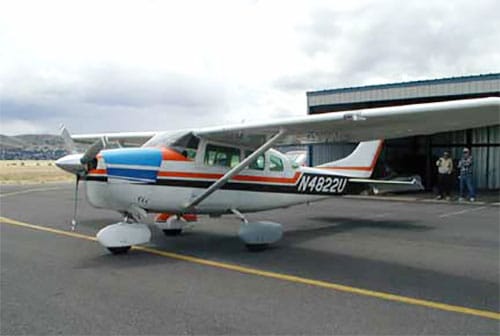Cessna Pilots Assocation
Course: Legacy 206 S&P
Learn more about your Cessna than 99% of owners will ever know.
Legacy 206 Systems & Procedures Course
Our Legacy 206 Systems & Procedures Course covers the Legacy 205/206/207 models from 1963-1986. It is intended for the following models: 205, 206, P206, P206A, U206A, P206B, U206B, P206C, U206C, P206D, U206D, P206E, U206E, U206F, U206G, 207, 207A.
The two day course covers the details of every system in the 206: Flight Controls, Landing Gear, Electrical, Hydraulic, Fuel, Pressurization, Propeller, Powerplant and Engine Management. After walking through the history and general introduction to the models, you’ll jump right into the technical analysis of the aircraft. Paul will take you through the Airframe, Flight Controls, and Landing Gear. In the afternoon you’ll move to the sections on the Fuel System and Powerplant. Day 1 will wrap up with a trip to the airport for a Hands-on Aircraft Inspection. On the second day, the course will continue with discussions on the Electrical System, Propeller, Powerplant Management, and more.
Expected Schedule of Topics:
Day 1 – History, Airframe, Flight Controls and Rigging, Landing Gear, Wheels and Brakes, Fuel System, Powerplant, Hands on
Day 2 – Electrical, Propeller, Powerplant Management, Tactical Data Analysis, Utility Systems
A Bit of 206 History
The Cessna 205, 206, and 207, known primarily as the Stationair, are single-engine, fixed landing gear, used not only for personal use but also for commercial air service.
In 1963 Cessna introduced the 205. This aircraft was basically a fixed gear version of the 1963 C210 and was certified on the 210 type certificate as the 210-5. Cessna continued production of the 205 essentially unchanged for 1964 as the model 205A. That same year the 206 was created by taking the 205 airframe and beefing it up with additional structure and larger rivets.
In 1969 the 207 was introduced. Cessna took the U206 cabin selection, wings, lift struts, and basic empennage and added a 18 inch section forward of the firewall and a 30 inch section aft of the rear door post which increased cabin size to 155.5 cubic feet. This allowed a seventh passenger seat and additional baggage area.
The first section of the course you’ll take a look at all the upgrades and modifications by model year. You’ll have a better understanding as to why CPA began offering these very comprehensive Systems & Procedures Courses.
You’ll leave this course knowing more about your Stationair than you ever thought possible.
Course Syllabus
SATURDAY
- • 8:00-8:30 a.m. — Welcome and Introductions
- • 8:30-9:45 a.m. — Airframe
- • 9:45-10:00 a.m. — Break
- • 10:00-12:00 p.m. — Powerplant
- • 12:00-1:15 p.m. — Lunch
- • 1:15-3:15 p.m. — Powerplant and Propeller
- • 3:15-3:30 p.m. — Break
- • 3:30-4:30 p.m. — Flight Controls and Rigging
- • 4:30-5:45 p.m. — Hands-on Aircraft Inspection
SUNDAY
- • 8:00-9:30 a.m. — Powerplant Management
- • 9:30-10:45 a.m. — Fuel Systems
- • 10:45-11:00 a.m. — Break
- • 11:00-12:00 p.m. — Electrical
- • 12:00-1:15 p.m. — Lunch
- • 1:15-2:15 p.m. — Landing Gear
- • 2:15-3:15 p.m. — Utility Systems
- • 3:15-3:30 p.m. — Break
- • 3:30-4:30 p.m. — Open Forum

Legacy 205/206/207 Systems and Procedures Courses
Stay Tuned For Future In-Person or Live Stream Events
Sign up for the Course List
Be the first to receive announcements about CPA courses and seminars. Never miss a registration spot!
